There are a couple of good reasons for cycling with a video camera. Often a specific incident may have led you to consider buying a camera to record your rides, as a deterrent or at least to report bad driving and near misses to be used as potential evidence like a car dashcam. You might also want to record interesting rides, especially if you take on a bucket list ride like the Alpe d'Heuz or Sa Calobra. With these two main use cases in mind, this buyer's guide rounds up our favourite bike cameras that can do one or both of these things very well, and hopefully at least one of them is perfect for you.

Best action camera: DJI Osmo Action 4 Adventure Combo

Best rear light cycling camera: Techalogic CR-1 Rear Light with HD Wide Angle Camera

Best front light cycling camera: Cycliq Fly12 Sport

Best front and rear cycling camera: Innovv K6 Dual Lens Camera

Best cycling camera for projects with higher production value: GoPro Hero9 Black

Best money-no-object cycling camera: Insta360 X3 Action Camera

Best helmet camera for cycling: Techalogic DC-1 Dual Lens Helmet Camera
Our Near Miss of the Day series, as unpleasant as viewing the clips might be for a cyclist, shows the potential value of riding with a camera. Many incidents would be a matter of one person's word against another but for the video evidence, and you want that evidence to be as high quality as possible. You'll also want the camera to fit nicely on your bike without being too heavy or bulky, and ideally it will be super easy to use.
Before we get into our selections, here are some of the key factors to consider when deciding what bike camera to buy. There's also a more detailed Q+A section with even more info underneath the products.
Recording quality
Start looking into picture quality and you'll suddenly meet a lot of jargon relating to pixels and resolution.
• 720p consists of 1280 x 720 pixels (so over 900,000 pixels)
• 1080p consists of 1920 x 1080 pixels (just over 2 million pixels)
• 4K consists of 3840 x 2160 pixels (over 8 million pixels)
1080p is able to give finer detail than 720p, and 4K offers greater detail again. On the flip side, higher resolution tends to cost more and it takes up more memory for the same amount of time.
You'll also come up against fps, or frames per second, which is exactly what it sounds like.
One other aspect to consider that may enhance recording quality is the sound recording capability. Many cycling cameras are equipped with built-in microphones that can capture audio alongside the video footage. This audio recording can be valuable in providing context or evidence of an encounter during your ride.
Looping video
Looping video allows a camera to record continuously. When it runs out of memory space it starts to overwrite your existing footage. This is a really valuable feature, meaning that you don't have to delete unneeded footage manually and you'll never find that the camera has stopped recording because the memory card is full.
If anything notable happens while you're riding — anything you want to keep as recorded evidence, for example — you can save it before it's overwritten.
Size and weight
Chances are that you want a camera that's small and unobtrusive, especially if you're planning to mount it on a helmet as opposed to the bike, but you might want to balance that against battery life; a very lightweight camera can sometimes have quite a short runtime.
Battery life
Battery life varies considerably between different cameras and, as mentioned above, there's often a balancing act between size/weight and runtime, so make sure you choose something that suits your needs.
Mounts
Chances are that you'll want to mount your camera to either the handlebar or a helmet, or facing backwards on your seatpost, with some of the best bike lights now featuring integrated cameras. You can get chest mounts too, which are great for mountain bike videos, but we've found them a bit cumbersome and not particularly comfortable for long rides.
It's worth checking what's in the box before handing over your cash and if the mounts you want aren't included in the package you'll need to budget for them separately.
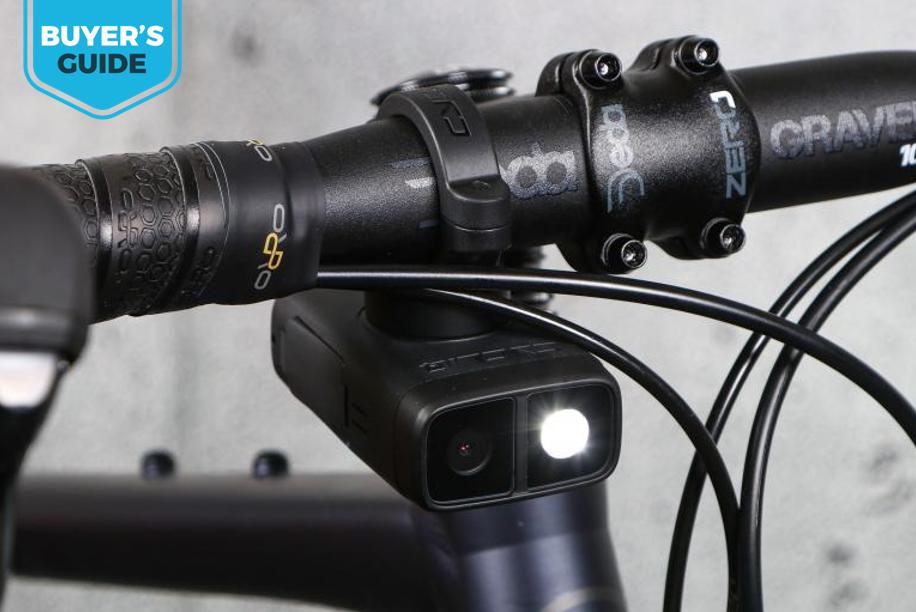







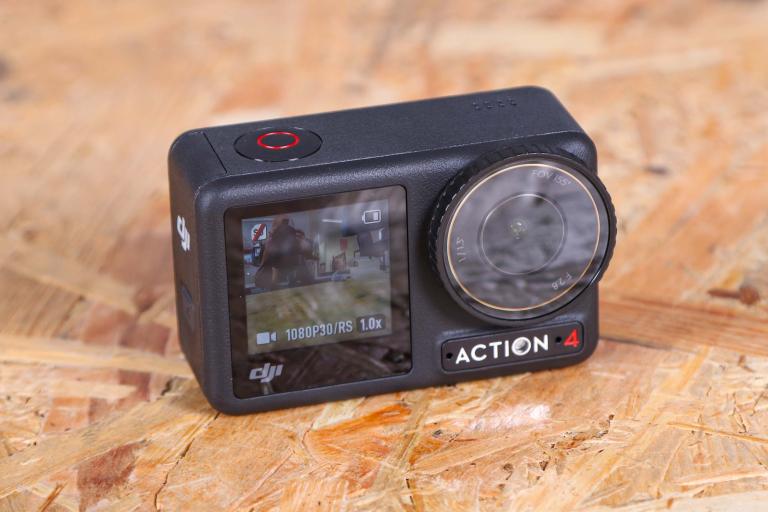
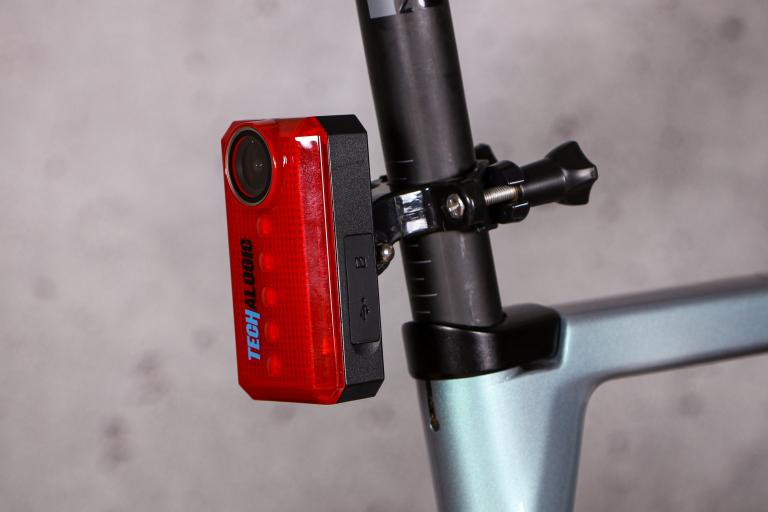
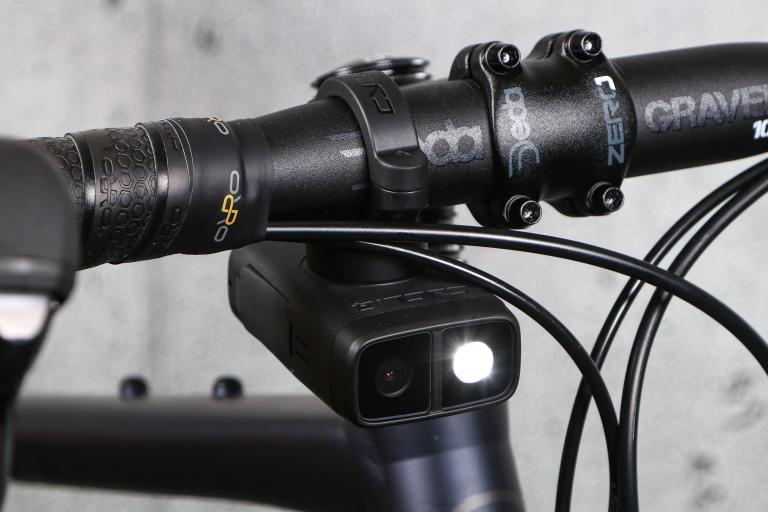

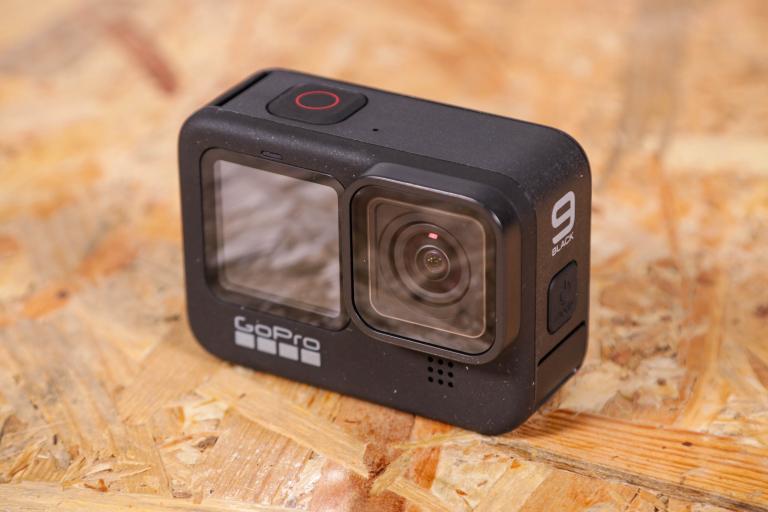


Add new comment
23 comments
Why is it so hard to corner the market when it comes to safety camera's? Most cameras have serious enough drawbacks to put them in the not worthy or buying category.
Gopro's?
Too bulky and would require 5 batteries for my rides. No thanks. Apart from that its the price and size of the things. I am not sticking that on my helmet nor my chest and it might just bend my garmin mount.
Cycliq Fly12 Sport?
If i cant replace the battery its a nogo from the start. Not even worth considering. Apart from that far too many reviews are suddent death syndrom or pee poor customer service. Or no service at all. I also have a Niterider light under my garmin so dont need a light. Niche product.
Insta360 X3 Action Camera?
After mounts and taxes that will be over 500 pounds please. Are you people mad? I can get a decent phone for that price that will do a better job. And i will have a phone.
Last camera i had was the first version of the Roadhawk bullet. Can plug in an external battery and run it as long as the battery would last. Decent picture. Barely enough.
The unit had an automatic 5 min file cut off and this caused a lot of shutdowns i think. The unit would just shut down for no reason making it pointless and unreliable.
I looked at the garmin VIRB which is not even listed here. Replaceable battery. Good pic and can go up to 120 fps if you want but at lower resolutions. Huge size though.
I am getting the feeling that far too many camera's were left out of this.
I reckon Cycliq make the best cameras for commuting, but you're right about poor customer service and the hit or miss longevity of them. I find it convenient to have the light built in as it means I can just have the cameras mounted for general city night riding where you don't need extra powerful lights.
Unfortunately, Garmin left the camera market a few years ago. The original Virb & Virb Elite (which added GPS) have yet to be beaten in terms of the combination of features and form factor. I have 2 of each (all bought used from ebay where they are still easy to find) and buy 3rd party batteries on Amazon. The later Virb 360 was too influenced by the GoPro form factor, which is fine on a full face helmet for downhill/trail riding but both bulky and lacking streamlining for mounting to a road bike or indeed any bike with lights also on bars or seat post.
An updated Virb original with up to 4K / 60fps would be great.
I also had 2 Cycliq 6 CEs but one succumbed to water ingress, which is sadly not uncommon. Soldered-in batteries are a negative. But otherwise I like them. I'm also running Aldi rear camera light which has yet to let me down after many years. Just a pain that a text file on the memory card needs updated on the PC to change date/time.
If someone could just release a bulletcam (pref. versions with & without a light) with replaceable battery, 4K & 1080p with at least 30fps (pref. 60), ANT+, GPS, incident detection, proper waterproofing and good night performance, they'd be onto a winner. But every offering seems to fall flat in one or more area.
I have a GoPro that I use for filming rides for submission to FulGaz, but the battery doesn't last much more than an hour.
Recommendations for an auxiliary battery that can extend recording time by an hour or so would be appreciated.
I find just an ordinary power bank is fine when I need to extend the running time, if you don't want to stop to allow for charging (if you charge at coffee stops just keep it your jersey) just put it in a frame bag or bar bag and run the cable out to it. Also has the advantage of being able to charge phone, lights, head unit or anything else that may need it. Hundreds available in a wide range of sizes, prices and capacities, many so small you could just tape or otherwise attach them to the camera or the mount.
I have a GoPro that I use for filming rides for submission to FulGaz, but the battery doesn't last much more than an hour
That seems about right. I have GPS on all the time and the OEM batteries never last more than about an hour. I still use the original one for most of my back and forward trips (<10 mins each way) to Garstang and (great credit to the quality of the battery) it will still hold almost 30 mintes worth of charge after 4 years of heavy use (less lockdowns). I have 3 new ones which I use on rotation very infrequently, which I hope will last the life of the camera. GoPro hardware is still spot on (Hero 7 Black)- it's just the software that's the problem, and even that has been working faultlessly recently
It would be nicer if Road.cc checked these group reviews for consistency.
The Cycliq gets knocked for its battery life even though it has the 2nd best here whilst things with <2hr run time which are useless for any serious road cyclist get praised for it.
The Go Pro gets knocked for its weight even though its one of the lightest in the group.
The comments make sense when the reviews are taken in isolation & context but look dumb collectively.
.
No mention of Chilli-tech? Would have thought they merited an evaluation in an article such as this.
.
Have Road.cc reviewed Chilitech at all?
Nothing recently just this https://road.cc/content/review/28390-chilli-tech-action-cam-2
For their Mk2 bullet cam, I'd say battery is replaceable, but has no levels indicating its low until literally the last moments, the indicator light turns reddish from blue. It takes longer to recharge than it lasts in use.
Picture quality is useless in low light, lots of grain, plus has some weird colour offset going sometimes on daylight, but could just be mine is faulty. Also glitches on recording sometimes, don't know if that's just the still lousy holder allows the camera to rattle so much the memory card disconnects momentarily.
Setting up timestamp and editing files is a pain.
For its budget though its probably usable just as cheaper dash cam alternative.
.
Thanks for that, Stono. Useful evaluation. Ta.
.
I've got a couple of Chilli Tech Pro II camera. Some footage:
Daytime 1200p30
Night 1080p60 (rear)
Night 1080p60 (front)
You can get 2 cameras for £97, or one for £107. I think they're good value for the quality of footage. With 2 cameras running at 60fps I can read car numberplates almost every time at night (my previous cameras were about 50:50).
The only thing I don't like is that there doesn't seem to be any way to turn off the burnt in time and date.
That and the time stamp resets to factory default if the battery runs out so ypou've got to remember to update it.
I've had good success with the footage when reporting close passes etc though. For the money it's a really good option.
Just had a quick search because I'm thinking of getting one of those at some point for a rear camera and that would annoy me, looks like you can stop it putting on the timestamp by adjusting the settings on the SD card, page 7/8 of this document?
https://chilli-tech.com/content/wp-content/uploads/2021/09/MKII-Manual-B...
.
This is their latest model. I imagine that it is (supposed to be) an improvment on the MK11.
.
https://www.chilli-tech.com/action-cameras?product_id=181
The older models set the time and date by editing a file. With the more recent ones you connect the camera to an app on your phone and it sets it automatically. I can't see an option in the app to turn off the timestamp though.
So far my cameras haven't lost the time, but it does drift a little.
Does anyone out there have any knowledge of which of these cameras would fit wheelchairs or mobility scooters I'm fed up with being hit by bikes and scooters also having cars driven right at me whilst crossing the road at the designated spots at junctions I'm starting to think some drivers had their brains removed as part of their driving test
So having been here just to say how awful cyclists are, never respond to replies,you expect some help.
You've never met a good cyclist; is this a million to one shot ?
If I'd allegedly been hit by so many bikes, then I'd be wearing a helmet, shin pads and elbow pads and then a helmet cam would do the trick.
If there are designated spots at junctions for cars to drive at wheelchairs or mobility scooters I would find somewhere else to cross!
Taking your question seriously though, a 360 degree camera on a pole or a hat/cap would be the only way to get front, back and side shots without needing 4 seperate cameras or constantly having to change the viewing angle of a single camera. You could add a flag to the pole like some recumbent bikes or child trailers use for some added visibility.
LOL. 😝 nice dig there.
Are there any legal considerations or regulations regarding the use of cycling cameras?
It's legal to film in a public place no matter how busy the area is, and you have the right to capture any image that is in plain view.
Not according to Lancashire Constabulary it isn't! According to the hopelessly inept and idle OpSnap Lancs: (more repetition, I'm afraid- but this is part of my Tribunal case against LC and the Information Commissioner)
I confirm that I understand that dashcam footage falls under the Category of CCTV and as the footage is taken in the public domain, the Domestic Purposes Exemption under the Data Protection Act/UKGDPR does not apply and therefore all users are Data Controllers in their own right. As such you should be informing the public that they are being filmed and should have some form of notification on your mode of transport as you have responsibilities under the Data Protection Act /UKGDPR
This is obvious LancsBollocks, and I never have any notifications on my legs when I'm walking or my bike when cycling. I have never seen any such notifications in Lancashire, although I did see a PassPixie near Bridlington. Clearly, all reports to OSL are fraudulent and illegal as far as Lancashire Constabulary is concerned. Nevertheless, you have to lie and agree to this for reports to OSL to be accepted
I should add that I put in the text of the report a statement that I'm not informing drivers that they are being filmed, and carry no notifications about filming on my legs or bike.
Why do you keep mentioning "non-replacable battery" against the Fly12?
How many of the other cameras (that are not action cams) have a battery that can be removed without dismantling the case?
Replaceable battery means that there is a cover plate - especially designed to give access to the battery.
Road.cc is being very disingenuous with its choice of language.
You can find guides on ifixit.com for the replacement of the batteries in the Fly12; it requires some basic electronics DIY skills including soldering.
I have used the Fly 6 and Fly 12 (Fly6 is the rear facing camera); both are great devices, but sadly both separately have died following charging, in the same conditions - plugged in after use but then wouldn't turn on afterwards.
Unfortunately in both cases the battery wasn't at fault in my Cycliq devices; it was an onboard failure, I would guess at a power surge on unplugging. I offered to send my Fly12 back to them recently but they are based in Perth WA and I am not prepared to pay the postage just to help out their fault diagnostics!
So, for me, great devices, but prone to catastrophic and irreparable failure. I would recommend them for ease of use and quality of image (Fly12 very good but heavy and blocky, Fly6 less good image quality but a good streamlined shape for behind the seatpost) but if they fail out of waranty, Cyliq aren't much use.